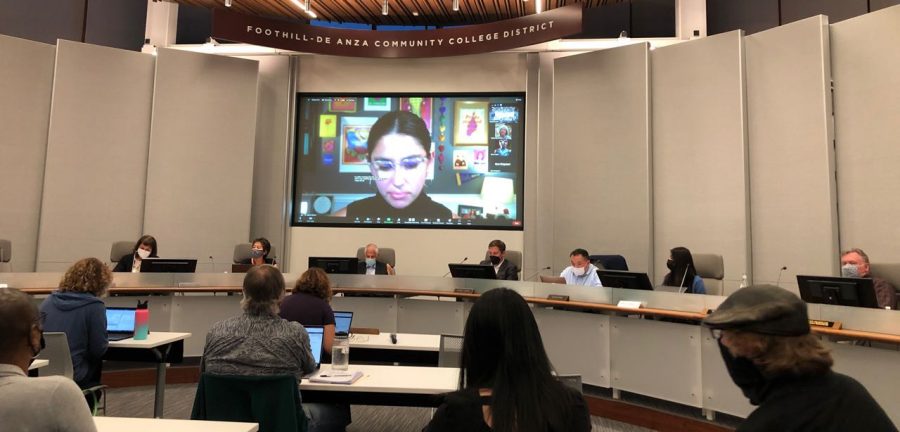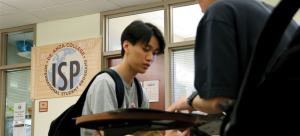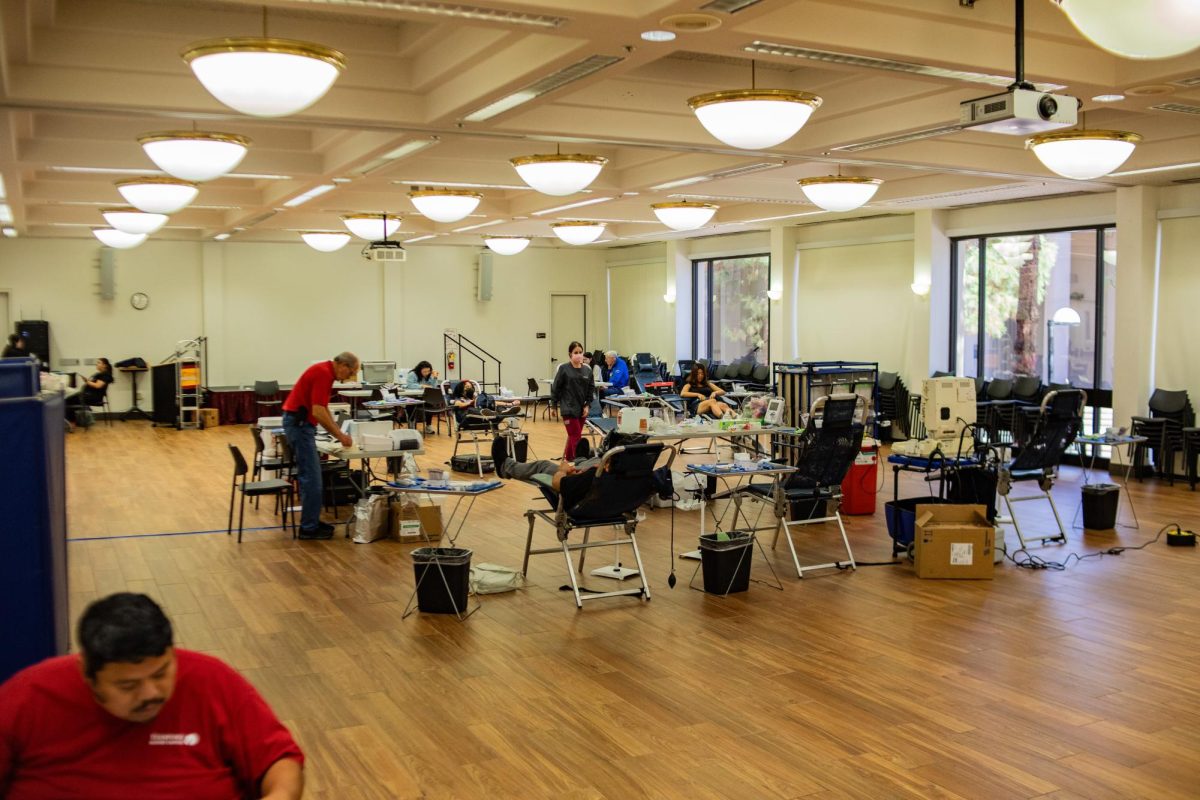Foothill-De Anza District forced to move away from at-large elections, with new districts coming in 2022
Sophia Garcia, an outreach director from Redistricting Partners, outlining Foothill-De Anza’s upcoming districting process to trustees and members of the public at the first public meeting held in-person since the pandemic started.
October 17, 2021
Spurred by a potential lawsuit that accused it of having violated an article in the California Voting Rights Act that bans at-large election systems, the Foothill-De Anza Community College District Board of Trustees is pushing ahead with their resolution to bring the district into compliance by February 2022.
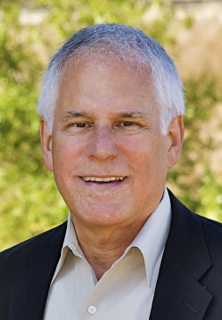
In the second of two public hearings held on Oct. 4, the board encouraged the Foothill-De Anza community to participate and advise them on how the new districts should be carved up.
Since its founding in 1957, the five-person board has consisted of members that are elected “at-large,” meaning trustees can live anywhere within the district, so long as they win their seat in a districtwide vote.
Peter Landsberger, board president since November 2016, said that the state law was very clear and that there were no other options other than to comply.
“Even though there are pluses and minuses that people can argue about, I’m comfortable with this change because that’s the policy,” Landsberger said.
Despite the fact that the newly drawn districts could bring about a major shakeup of the current board, he isn’t letting that influence any decisions.

“I hope it doesn’t change the board membership if any, but that’s for the people to decide,” Landsberger said. “We’re only going to make decisions based on the criteria the public has laid out and the chips are going to fall where they may. If two or even three of us end up in one district, that’s just the way the cookie crumbles.”
Trustee Pearl Cheng, who has served since 2008, outlined a number of factors that will guide the board in the new districting process.
“The California Voting Rights Act imbeds criteria that guide this work and were described well during the meeting: 1. Equal population, 2. Keep communities of interest together, 3. Comply with the State’s Voting Laws, 4. No incumbent protection,” wrote Cheng in an email.
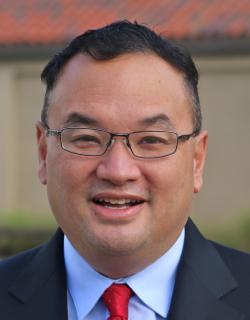
Roberta Holloman, who was the only person from the public to comment on Monday, said she agreed. She also represented the League of Women Voters of Cupertino and Sunnyvale.
“No incumbent protection means no gerrymandering,” Holloman said. “Otherwise, I’m pleased to see that many of our criteria are the same as theirs. We’re watching and we think they’re doing a good job.”
While no one on the board objected to the law, some members like Trustee Gilbert Wong, did lament that the old election system had been working fine.
“In my personal opinion, in the case of Foothill-De Anza Community College District, the at-large election system has been working very well, because you have three persons of color that currently serve on the board, of which, two of them are women,” Wong said.
“However, no one should be surprised by this,” Wong said. “Every ten years, from the US Congress, to the California State Assembly, to City Councils even, we have to do this routine of redrawing the lines even if there’s no guarantee that the incumbents will be protected. It’s just democracy at work.”
To help guide it through its first ever districting process, Foothill-De Anza is employing the services of Redistricting Partners, a Sacramento based company that has assisted other community college districts and local governments in the State before with similar efforts.
In addition to advising the board on its project and keeping it compliant with State law, the company has also configured a public mapping tool called DistrictR which any member of the public can use to draw maps that can be submitted to the board.

According to the latest 2020 Census, the total population living in the Foothill-De Anza Community College District area is approximately 448,900 and the district map will need to be split into five even districts.
Members of the public do not have to be actual residents of any of those areas to submit input.
“You can be someone outside, whether that be a student or someone with connections to either of the schools,” Wong said. “We welcome your input. You can find groups of voters inside the district area that reflect your interests.”
The board will hold two more public meetings – one on Dec. 13 and the other on Jan. 10, to review draft maps submitted by the public before voting on a final version on Feb. 14, 2022.
Existing trustees will serve out the remainder of their terms even as the new election system is implemented in 2022.



